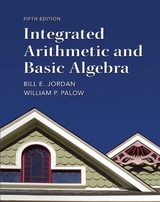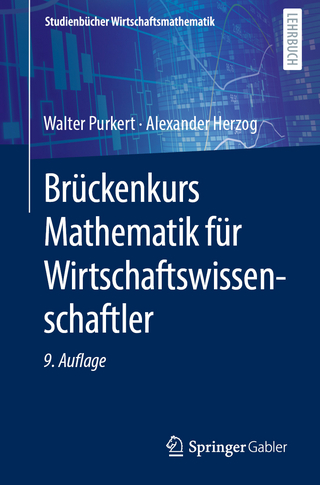
Integrated Arithmetic and Basic Algebra
Pearson (Verlag)
978-0-321-44255-0 (ISBN)
- Titel erscheint in neuer Auflage
- Artikel merken
R. Basic Ideas
R.1 Reading and Writing Numerals
R.2 Addition and Subtraction of Whole Numbers
R.3 Multiplication of Whole Numbers
R.4 Division of Whole Numbers
R.5 A Brief Introduction to Fractions
R.6 Addition and Subtraction of Decimal Numerals
R.7 Multiplication and Division of Decimal Numerals
R.8 Linear Measurement in the American and Metric Systems [new section]
1. Adding and Subtracting Integers and Polynomials
1.1 Variables, Exponents, and Order of Operations
1.2 Perimeters of Geometric Figures
1.3 Areas of Geometric Figures
1.4 Volumes and Surface Areas of Geometric Figures
1.5 Introduction to Integers
1.6 Addition of Integers
1.7 Subtraction of Integers and Combining Like Terms
1.8 Polynomial Definitions and Combining Polynomials
2. Laws of Exponents, Products and Quotients of Integers and Polynomials
2.1 Multiplication of Integers
2.2 Multiplication Laws of Exponents
2.3 Products of Polynomials
2.4 Special Products
2.5 Division of Integers and Order of Operations with Integers
2.6 Quotient Rule and Integer Exponents
2.7 Power Rule for Quotients and Using Combined Laws of Exponents
2.8 Division of Polynomials by Monomials
2.9 An Application of Exponents: Scientific Notation
3. Linear Equations and Inequalities
3.1 Addition Property of Equality
3.2 Multiplication Property of Equality
3.3 Combining Properties in Solving Linear Equations
3.4 Using and Solving Formulas
3.5 Solving Linear Inequalities
3.6 General, Consecutive Integer, and Distance Application Problems
3.7 Money, Investment, and Mixture Application Problems
3.8 Geometric Application Problems
4. Graphing Linear Equations and Inequalities
4.1 Reading Graphs and the Cartesian Coordinate System
4.2 Graphing Linear Equations with Two Variables
4.3 Graphing Linear Equations by Using Intercepts
4.4 Slope of a Line
4.5 Slope-Intercept Form of a Line
4.6 Point-Slope Form of a Line
4.7 Graphing Linear Inequalities with Two Variables
4.8 Relations and Functions
5. Factors, Divisors, and Factoring
5.1 Prime Factorization and Greatest Common Factor
5.2 Factoring Polynomials with Common Factors and by Grouping
5.3 Factoring General Trinomials with Leading Coefficients of One
5.4 Factoring General Trinomials with Leading Coefficient Other Than One
5.5 Factoring Binomials
5.6 Factoring Perfect Square Trinomials
5.7 Mixed Factoring
5.8 Solving Quadratic Equations by Factoring
6. Multiplication and Division of Rational Numbers and Expressions
6.1 Fractions and Rational Numbers
6.2 Reducing Rational Numbers and Rational Expressions
6.3 Further Reduction of Rational Expressions
6.4 Multiplication of Rational Numbers and Expressions
6.5 Further Multiplication of Rational Expressions
6.6 Division of Rational Numbers and Expressions
6.7 Division of Polynomials (Long Division)
7. Addition and Subtraction of Rational Numbers and Expressions
7.1 Addition and Subtraction of Rational Numbers and Expression with Like Denominators
7.2 Least Common Multiple and Equivalent Rational Expressions
7.3 The Least Common Denominator of Fractions and Rational Expressions
7.4 Addition and Subtraction of Rational Numbers and Expressions with Unlike Denominators
7.5 Complex Fractions
7.6 Solving Equations Containing Rational Numbers and Expressions
7.7 Applications with Rational Expressions
8. Ratios, Percents, and Applications
8.1 Ratios and Rates
8.2 Proportions
8.3 Percent
8.4 Applications of Percent
8.5 Further Applications of Percent
9. Systems of Linear Equations
9.1 Defining Linear Systems and Solving by Graphing
9.2 Solving Systems of Linear Equations Using Elimination by Addition
9.3 Solving Systems of Linear Equations Using Substitution
9.4 Solving Application Problems Using Systems of Equations
9.5 Systems of Linear Inequalities
10. Roots and Radicals
10.1 Defining and Finding Roots
10.2 Simplifying Radicals
10.3 Products and Quotients of Radicals
10.4 Addition, Subtraction, and Mixed Operations with Radicals
10.5 Rationalizing the Denominator
10.6 Solving Equations with Radicals
10.7 Pythagorean Theorem
11. Solving Quadratic Equations
11.1 Solving Incomplete Quadratic Equations
11.2 Solving Quadratic Equations by Completing the Square
11.3 Solving Quadratic Equations by the Quadratic Formula
11.4 Quadratic Equations with Complex Solutions
11.5 Solving Mixed Equations
11.6 Applications Involving Quadratic Equations
| Erscheint lt. Verlag | 5.2.2008 |
|---|---|
| Sprache | englisch |
| Maße | 276 x 216 mm |
| Gewicht | 1842 g |
| Themenwelt | Mathematik / Informatik ► Mathematik |
| ISBN-10 | 0-321-44255-5 / 0321442555 |
| ISBN-13 | 978-0-321-44255-0 / 9780321442550 |
| Zustand | Neuware |
| Informationen gemäß Produktsicherheitsverordnung (GPSR) | |
| Haben Sie eine Frage zum Produkt? |
aus dem Bereich



